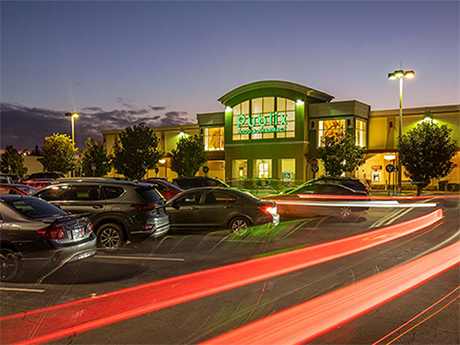Built in 2008 and renovated in 2022, Osceola Village was fully leased at the time of the sale to tenants including Publix, Goodwill, Metro Diner, Insight Credit Union, Orlando Health and DaVita Dialysis.
The Orlando MSA retail market is doing well, on the surface. According to the figures, the region has recovered from the effects of the COVID-19 pandemic. Orlando’s economy is heavily driven by tourism and when travel came to a halt and the first statewide shutdown orders went into effect on April 3, 2020, the impacts were profound and widespread. , as four of Central Florida’s top 10 employers are in hospitality or retail. , as well as Orlando International Airport.
Since then, life in Central Florida has largely returned to normal. Tourism is back, hotel occupancy is up and people are going out to eat again. Retail figures for the second quarter are actually better than the first quarter of 2019, according to the CoStar Group. The uptime percentage at the start of 2019 was 5.9%, compared to 4.7% at the end of the second quarter. The average rent is also up, from $21.94 per square foot to $25.52.

Patrick Mahoney, NAI Realvest
Consumer habits have changed as e-commerce is still hugely popular, although it is now more about convenience than risk mitigation.
For those who can, teleworking has become the preferred mode. Due to the trend towards remote working, the growth of the local population has accelerated as many people are moving, because if you are working remotely anyway, why not start from a relatively affordable Orlando?
Dark clouds in sight?
Yet beneath all those rosy numbers, there’s a sense of unease. Many of the same factors that allowed Central Florida to thrive again have started to create problems, and the mood is starting to go downhill.
According to the Orlando Economic Partnership, in 2019, 53.3% of employment in Central Florida was in recreation and hospitality, education and healthcare, retail and of the government. All of these sectors suffered severe blows at the start of 2020 that lasted until the first half of 2021.
As a result, many workers have shifted to different fields of employment. Some, especially women with young children, left the labor market altogether because they could not find or pay for childcare.
Retail establishments of all kinds, large and small, are struggling to find employees. Restaurants are understaffed and many are forced to cut hours because they simply don’t have enough people.
Hotels are also struggling to keep up with the high occupancy rate. Many child care centers have closed permanently and those that remain are unable to find enough staff to meet demand. Today, air travel is deeply unpleasant and plagued with complications due to the lack of employees – from ticket agents to pilots.
Another factor weighing on the region is inflation. Most notably, we see it with skyrocketing rents. According to the Washington Post, the average rent for a one-bedroom apartment is up 24% year over year. According to the Orlando Business Journal, the local rental market is the 13th most overvalued in the entire country. Inflation and “shrinkflation” are the main pillars of the economy.
Food prices rose 10.8% year-over-year in April 2022, the largest 12-month increase since November 1980 (according to the US Bureau of Labor Statistics). Gas prices have started to drop, but the average gas price today (July 27) is $3.98 a gallon, according to AAA. On July 27, the Federal Reserve announced a further 0.75% increase in the federal funds rate. This will make credit card debt, car purchases and home ownership more expensive.
As a result, discretionary income takes a hit. Everything other than basic expenses, from restaurant meals to streaming services to travel, is on the chopping block. The effect on the retail market will be substantial. Restaurants are going to be hit with rising expenses as sales decline.
Rising gasoline prices will both boost e-commerce (reducing individual trips and limiting profitable impulse purchases in-store) while increasing gasoline costs and reducing profits.
People plan shopping trips to reduce gas mileage and eliminate unnecessary errands or destinations. As back-to-school shopping is in full swing, many people are cutting back on all their spending.
Outlook
Overall, Central Florida retail market numbers are looking good right now. If inflation, gasoline prices and cost increases due to production or shipping issues subside in the short term, the market will continue to do well.
The Central Florida retail market has proven its resilience time and time again. Current circumstances will be no different – there will be winners and losers, but the overall ecosystem is strong and will continue to thrive.
— By Patrick Mahoney, President and CEO, NAI Realvest. This article originally appeared in the August 2022 issue of Southeast real estate company.

